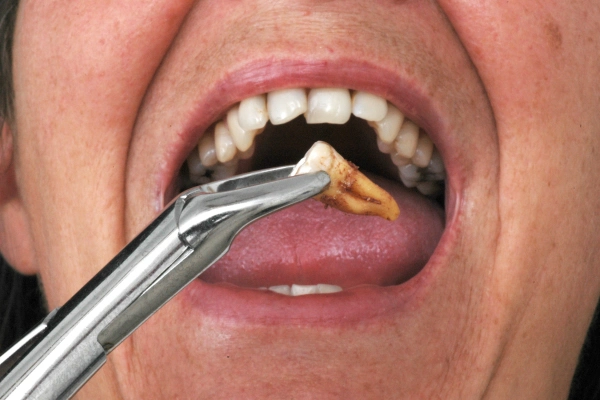Wisdom teeth removal is a common dental procedure that many people undergo in their late teens or early twenties. While the surgery itself is routine, the recovery process can vary significantly from person to person. Proper care during the healing phase is crucial for minimizing discomfort and preventing complications. This article provides essential tips for a smooth recovery after wisdom teeth removal.
Understanding the Procedure
What to Expect During the Surgery
Wisdom teeth, or third molars, often require extraction due to issues such as:
- Impaction: When there isn’t enough space in the mouth for the teeth to emerge properly.
- Crowding: Wisdom teeth can push against adjacent teeth.
- Decay or Disease: If wisdom teeth are partially erupted, they can trap food and bacteria, leading to decay.
During the procedure, a dentist or oral surgeon will administer anesthesia to ensure you are comfortable. The extraction process typically involves:
- Numbing the Area: Local anesthesia or sedation will be used.
- Removing the Tooth: The dentist will make an incision in the gum tissue if the tooth is impacted and remove it.
- Closing the Site: Stitches may be used to close the wound, depending on the complexity of the extraction.
Immediate Post-Operative Care
1. Follow Your Dentist’s Instructions
Your dentist will provide specific post-operative care instructions tailored to your situation. Adhering to these guidelines is essential for a smooth recovery.
2. Manage Bleeding
It’s normal to experience some bleeding after the procedure. Here’s how to manage it:
- Gauze Pads: Bite down on gauze pads placed over the extraction site for about 30-45 minutes to help stop bleeding.
- Avoid Spitting: Try not to spit or rinse your mouth vigorously for the first 24 hours, as this can dislodge the blood clot.
3. Use Ice Packs
Applying ice packs to the outside of your cheeks can help reduce swelling and numb the area.
- How to Use: Apply the ice pack for 15-20 minutes at a time, with breaks in between.
- Timing: Use ice packs for the first 24-48 hours post-surgery to minimize swelling.
Managing Pain and Discomfort
4. Take Prescribed Medications
Your dentist may prescribe pain relievers or recommend over-the-counter medications. Follow these guidelines:
- Pain Management: Take medications as directed to manage pain effectively.
- Avoid Aspirin: Do not take aspirin for pain relief, as it can thin the blood and increase bleeding.
5. Stay Hydrated
Staying hydrated is crucial for recovery, but be cautious about how you drink:
- Avoid Straws: Using straws can create suction that dislodges blood clots, leading to complications like dry socket.
- Drink Water: Sip on water throughout the day to stay hydrated.
Dietary Considerations
6. Follow a Soft Food Diet
In the days following surgery, it’s essential to eat soft foods that require minimal chewing. Here are some safe options:
- Applesauce: Easy to swallow and packed with nutrients.
- Yogurt: A good source of protein and probiotics.
- Mashed Potatoes: Soft and comforting, they can be flavored in many ways.
- Smoothies: Blend fruits with yogurt or milk for a nutritious beverage.
7. Avoid Certain Foods
Certain foods can irritate the extraction site or complicate healing:
- Hard Foods: Avoid nuts, chips, and hard candies that can cause pain.
- Spicy Foods: Spices can irritate the gums and lead to discomfort.
- Acidic Foods: Foods like citrus fruits and tomatoes can cause sensitivity.
Oral Hygiene Practices
8. Maintain Oral Hygiene
Good oral hygiene is essential for preventing infection. However, you need to be gentle:
- Brushing: Brush your teeth, but avoid the extraction site for the first few days. After that, you can gently brush the area.
- Rinsing: After 24 hours, you can start rinsing with warm salt water to keep the area clean. Mix 1 teaspoon of salt in a glass of warm water and gently swish.
9. Monitor for Signs of Infection
Be aware of symptoms that may indicate an infection:
- Increased Pain: If pain worsens instead of improving, consult your dentist.
- Swelling or Redness: Excessive swelling or redness around the extraction site may be a sign of infection.
- Fever: A fever accompanying other symptoms should prompt a call to your dentist.
Rest and Recovery
10. Get Plenty of Rest
Your body needs time to heal, so prioritize rest during the recovery period:
- Limit Activities: Avoid strenuous exercise and activities for at least 3-5 days post-surgery.
- Sleep Position: Sleep with your head elevated for the first few nights to reduce swelling.
11. Take Time Off Work or School
Depending on your recovery, consider taking a day or two off work or school. Listen to your body and don’t rush the healing process.
Follow-Up Care
12. Attend Your Follow-Up Appointment
Your dentist may schedule a follow-up appointment to check your healing progress:
- Stitches Removal: If you have stitches that need to be removed, this will typically occur within a week.
- Healing Assessment: Your dentist will evaluate the extraction site to ensure it’s healing properly.
Lifestyle Adjustments
13. Avoid Smoking and Alcohol
Both smoking and alcohol can impede healing:
- Smoking: The suction created while smoking can dislodge blood clots, leading to dry socket.
- Alcohol: It can interfere with pain medications and delay healing.
14. Practice Stress Management
Recovery can be stressful, especially if you’re managing discomfort. Consider relaxation techniques such as:
- Deep Breathing: Practice deep breathing exercises to manage stress and promote relaxation.
- Gentle Activities: Engage in light activities such as reading or watching movies to keep your mind occupied.
When to Contact Your Dentist
15. Recognize Complications
If you experience any of the following, contact your dentist immediately:
- Dry Socket: This occurs when the blood clot dislodges, exposing bone and nerves. Symptoms include severe pain that typically starts a few days after surgery.
- Infection Signs: Fever, persistent swelling, or pus drainage from the extraction site are signs that require prompt attention.
16. Ongoing Pain or Discomfort
If pain persists beyond a few days or worsens, it’s essential to reach out for professional evaluation.
Conclusion
Healing after wisdom teeth removal can be a smooth process if you follow the right guidelines. By adhering to post-operative care instructions, managing pain effectively, maintaining oral hygiene, and making dietary adjustments, you can significantly enhance your recovery experience. Prioritize rest and be mindful of your body’s signals, and don’t hesitate to contact your dentist if you have concerns. With the right care, you’ll be back to your normal routine in no time.
Explore this topic: : https://dentistdecode.com/when-can-i-eat-a-burger-after-wisdom-teeth-removal/



